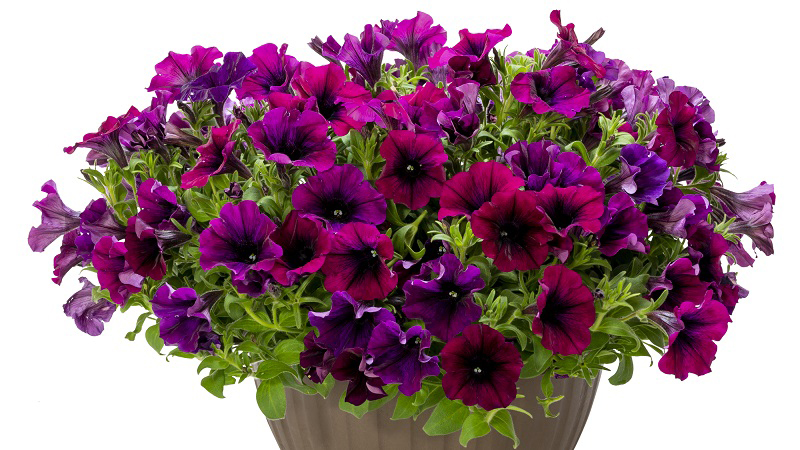We Could Be Growing More Green Infrastructure Plants That Work, Says Shannon Currey
Plants put the “green” in green infrastructure. And while most of those who work in this emerging field agree that plants are important, there are major obstacles to overcome before the full potential of plants for green infrastructure and low impact development can be realized. Plant maintenance was at the top of the list of difficulties in these projects, followed by plant survival and weed control.
At Cultivate’15, Shannon Currey, director of marketing at Hoffman Nursery, shared these results from a 2014 survey of low impact development practitioners. She said the horticulture industry is uniquely positioned and has the expertise to help remedy the problems and bridge the gaps in plant knowledge.
Shift The Focus To Functionality
For starters, she said the industry could be offering a wider range of plants for the herbaceous layer in green infrastructure. But it might require a shift in thinking.
“We have previously focused more on the aesthetic appeal of ornamentals,” Currey said. “We need to start looking at functionality. It takes a different mindset to think about plants in terms of their contribution to the plant community or their ability to solve problems.”
Why the shift? Because features used frequently in green infrastructure like bioretention basins, vegetated swales and wetlands rely heavily on plants performing their functions to work effectively. Plants used in these types of landscapes must be able to tolerate difficult conditions, such as fluctuating water levels and the presence of pollutants. Other desirable features include heat tolerance, consistent coverage without being aggressive and efficient use of nutrients, said Currey.
As much a reference as it is a plant catalog, Hoffman Nursery’s catalog is an example of a tool growers can use to educate others on the functionality of plants and help them make smart choices. Hoffman Nursery is located in North Carolina and specializes in grasses, sedges and rushes. Its 2015-2016 catalog begins with an overview of green infrastructure features and a guide to plants that fit those features. A 10-page quick-guide also emphasizes function in the landscape, offering solutions to landscape challenges and plants for common site conditions. Plants are grouped by physical attributes such as hardiness zone, active growing season and height. The catalog also includes an extensive list of North American native grasses and sedges. In addition to these guides, the catalog gives overviews of major genera and in-depth looks at popular grasses like Miscanthus, Panicum, Pennisetum and Schizachyrium.
Select The Right Plant For The Right Condition
During her presentation, Currey gave examples of plants that growers can offer for green infrastructure projects. However, she emphasized the importance of matching the right plant to the site condition. Differences in region and microconditions on site can affect which plants will do well. She noted that true grasses from the Poaceae family often do well because they have a wide distribution, highly fibrous root systems and are adaptable to extreme conditions. Sedges were also at the top of her list.
Specific plants Currey mentioned in her presentation as working well for green infrastructure projects are listed below, and there are many more available if growers do their homework:
Juncus effusus
Carex vulpinoidea – Fox Sedge
Deschampsia cespitosa – Tufted Hair Grass
Carex grayi
Panicum virgatum cultivars – Switchgrass
Schizachyrium scoparium cultivars
For green roofs:
Sesleria autumnalis
Bouteloua gracilis
B. gracilis ‘Blonde Ambition’
B. cartipendula
Schizachyrium scoparium cultivars
Cultivate Strong Partnerships Among Growers, Contractors And Project Designers
Currey ended her Cultivate’15 talk with a list of action items for growers, landscapers/contractors and project designers. She suggested growers research and identify plants they are growing that would be a good fit for green infrastructure and expand their offerings if it makes sense. When supplying plants for a project, they’ll get valuable feedback by checking back in to see how the plants performed. Landscapers/contractors can tap into this new market by getting training in green infrastructure installation and maintenance. She also suggested they work closely and often with plant suppliers. For project designers, Currey recommends using plant suppliers as a resource and involving contractors early in the planning process. Green infrastructure is an evolving market and there are gaps in knowledge. Currey said she thinks we need evaluation of a wider range of plants and better information on optimal planting sizes and density.
Quoting Charlie Hall, professor and Ellison Chair in International Floriculture at Texas A&M University and chief economist for AmericanHort, Currey emphasized that green infrastructure could be a game changer for the industry. She believes the key to this market for our industry lies in creating partnerships and better communication between knowledgeable growers, project designers, and the contractors working on green infrastructure.










